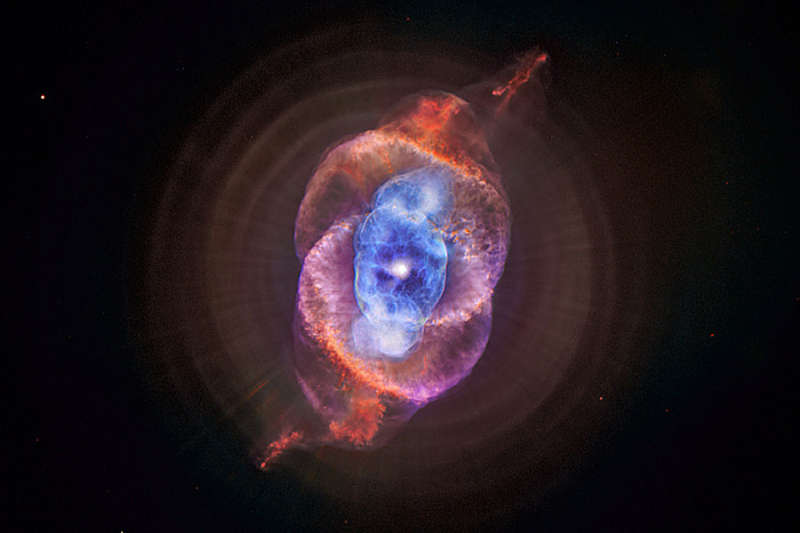X Rays from the Cats Eye Nebula

Explanation:
Haunting patterns within planetary nebula
NGC 6543
readily suggest its popular moniker -- the
Cat's Eye nebula.
Starting in 1995, stunning false-color optical images
from the Hubble
Space Telescope detailed the swirls of this
glowing nebula, known to
be the gaseous shroud expelled from a dying
sun-like
star about 3,000 light-years from Earth.
This composite picture
combines the latest Hubble optical image of the Cat's Eye with new
x-ray
data from the
orbiting Chandra Observatory and reveals
surprisingly intense x-ray emission indicating the presence
of extremely hot gas.
X-ray emission is shown as blue-purple hues superimposed on the nebula's center.
The nebula's central star itself is clearly immersed in
the multimillion degree, x-ray emitting gas.
Other pockets of x-ray hot gas seem to be bordered by cooler
gas emitting strongly at optical wavelengths, a clear indication
that expanding hot gas is sculpting the
visible Cat's Eye
filaments and structures.
Gazing into the Cat's Eye, astronomers see
the fate of our sun,
destined to enter its own
planetary nebula phase
of evolution ... in about
5 billion
years.
Authors & editors:
Robert Nemiroff
(MTU) &
Jerry Bonnell
(USRA)
NASA Web Site Statements, Warnings,
and Disclaimers
NASA Official: Jay Norris.
Specific
rights apply.
A service of:
LHEA at
NASA /
GSFC
& Michigan Tech. U.

